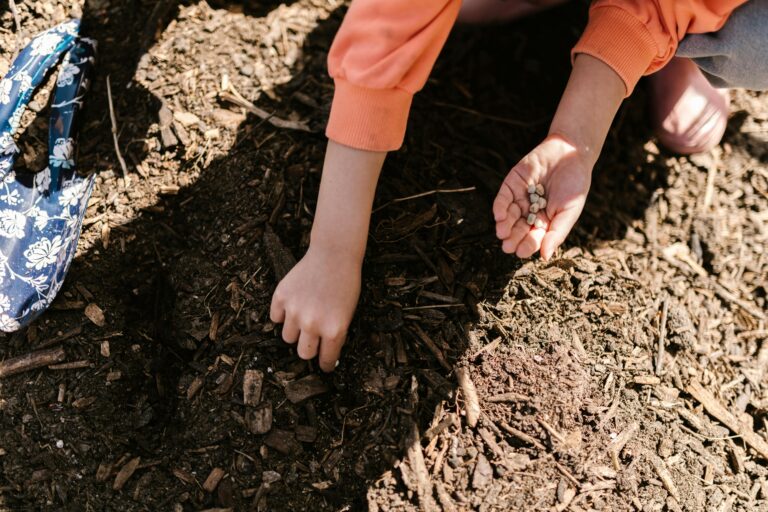Best Garden Tools For Beginners in -2025
Introduction
Gardening offers a deeply rewarding experience, especially for beginners seeking a peaceful hobby, a greener lifestyle, or a way to grow their own food. But one of the most common challenges new gardeners face is choosing the right tools. With thousands of options on the market, it’s easy to feel overwhelmed. Fortunately, this comprehensive guide simplifies the decision-making process by breaking down the essential gardening tools every beginner should own—backed by research and expert insights. Whether you’re planting in pots, raised beds, or backyard soil, having the right equipment makes gardening more enjoyable, efficient, and successful.
1. Gloves – More Than Just Hand Protection
Many new gardeners underestimate the value of a good pair of gloves—until they experience their first thorn or blister. Gloves are not just for keeping hands clean. They protect against cuts, insect bites, irritants, and even fungal infections that can come from handling damp soil.
What to Look For: Choose breathable, water-resistant gloves with padded palms and reinforced fingertips. Flexible materials like nitrile or bamboo blends offer comfort and dexterity, which are essential when handling delicate seedlings.
2. Hand Trowel – Your Garden’s Best Friend
This versatile tool is a must-have. It’s used for digging small holes, transplanting seedlings, and removing weeds. A high-quality trowel improves speed and accuracy, especially in tight spaces like containers and raised beds.
Expert Tip: Look for a trowel with a stainless-steel blade and ergonomic grip to reduce wrist strain. Measurement markings on the blade can help ensure proper planting depth.
3. Pruning Shears – Trim for Growth
Pruning is essential to healthy plant growth. It encourages new blooms, shapes the plant, and prevents disease by removing dead or infected areas. For beginners, a basic bypass pruner is ideal.
Safety Tip: Always clean your shears with alcohol after each use to prevent spreading plant diseases.
4. Watering Can – Precision and Care
While a hose might seem easier, a watering can gives beginners more control. It prevents overwatering and directs water right to the plant roots, especially in pots or indoor setups.
Choosing the Right Can: Look for a lightweight design with a detachable rose (sprinkler head). BPA-free plastic or galvanized steel options are both durable and eco-friendly.
5. Garden Fork – Break Through Tough Soil
New gardeners often struggle with compacted or clay-heavy soil. A garden fork makes it easier to loosen, aerate, and mix compost into the ground. It’s also great for turning mulch or flipping compost piles.
Tip: Short-handled forks work well in raised beds, while long-handled versions suit in-ground gardens.
6. Hoe – For Weeding and Soil Prep
Weeds can choke out your new plants if left unchecked. A garden hoe helps cut weeds at the root and stir the soil to promote aeration. It’s a time-saving tool that every beginner should learn to use.
Best for Beginners: A draw hoe is ideal—it offers control and ease of use, especially in row gardens.
7. Kneeling Pad or Garden Kneeler – Protect Your Body
Gardening can take a toll on your knees and back. A soft kneeling pad or a foldable garden kneeler helps prevent joint strain during planting, weeding, and harvesting.
Bonus Feature: Many garden kneelers double as seats, giving you a comfortable place to rest or work at waist height.
8. Rake – For Cleanup and Prep
A rake is useful not just in autumn but year-round. It helps clear debris, level soil, and spread mulch. Metal rakes are more durable and better suited for heavy-duty use compared to plastic versions.
Maintenance Tip: Clean your rake after use and hang it to prevent rust and bending.
9. Garden Hose with Adjustable Nozzle
Hydration is vital, and having a quality garden hose with an adjustable nozzle allows you to tailor water pressure to different plants. Delicate seedlings need a gentle spray, while mature shrubs may require a stronger stream.
Eco Tip: Choose a hose made of lead-free materials and with a shutoff valve to conserve water.
10. Tool Organizer – Stay Neat, Stay Efficient
Many beginners waste time looking for misplaced tools. A reliable tool organizer—be it a canvas tote, belt, or shed rack—keeps everything within reach and prolongs the life of your equipment.
Organization Hack: Label pockets in your tool bag to build a routine and avoid confusion as your collection grows.
Bonus Tips for Beginner Gardeners:
- Start with easy plants: Lettuce, basil, cherry tomatoes, and green beans are great beginner-friendly choices.
- Use raised beds or containers: They give you more control over soil, drainage, and placement.
- Follow the sun: Most vegetables need 6–8 hours of sunlight. Choose your garden location wisely.
- Be patient: Plants need time to establish roots. Don’t over-fertilize or overwater.
Final Thoughts
Gardening is a journey of learning and growth, both for plants and gardeners alike. With the right set of tools, beginners can avoid common pitfalls and build confidence. Remember, the best gardens aren’t made overnight—they grow one seed, one season, and one lesson at a time. Invest in quality tools, learn from each mistake, and most importantly, enjoy the process. Happy gardening!
Keywords: beginner gardening, essential gardening tools, gardening tips 2025, tools for home garden, garden for beginners
Written by Gardenfr Editorial Team
Free for educational and informational use – No copyright restrictions

